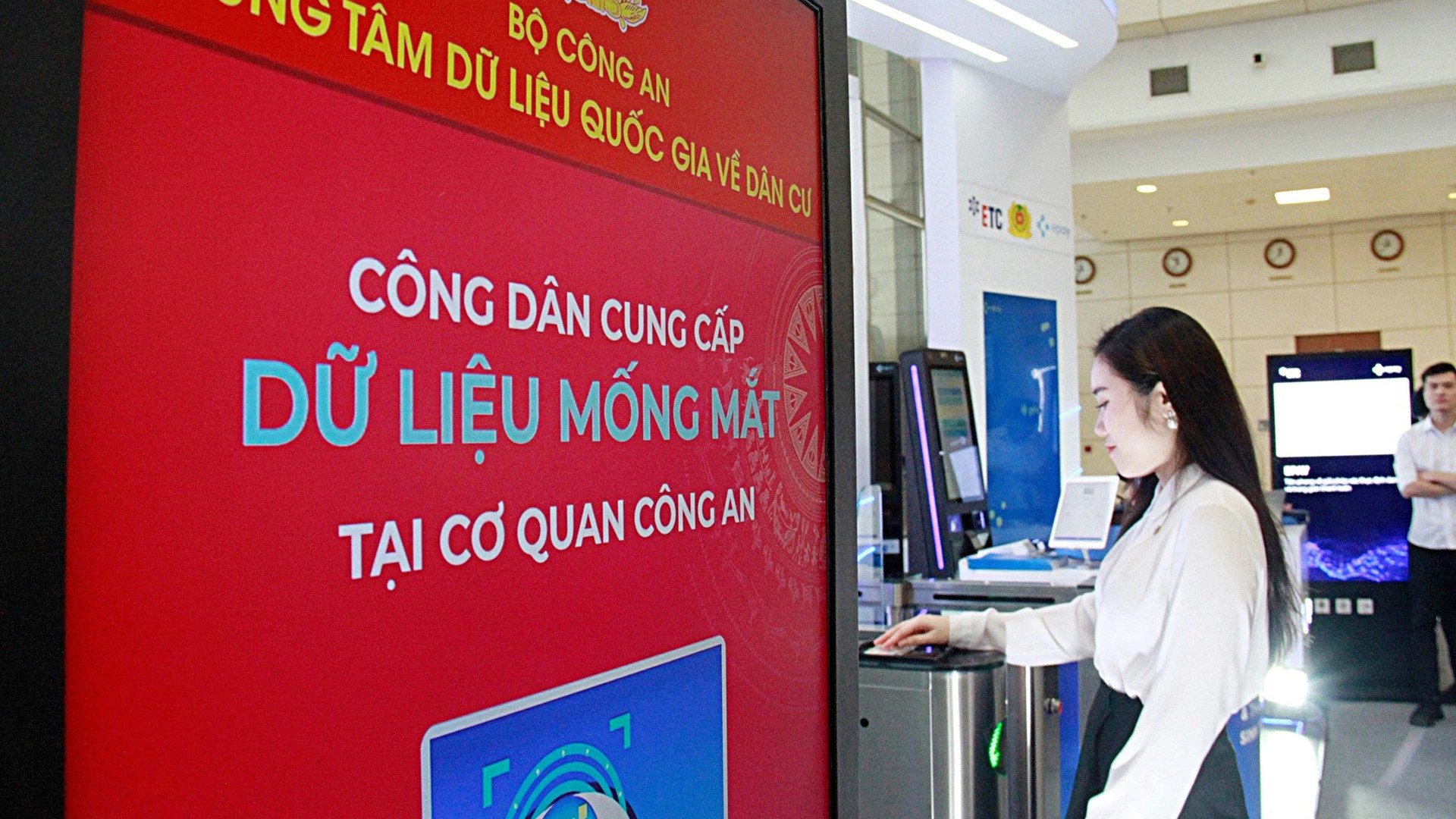According to the provisions of the Law on Identification, which took effect from July 1, in addition to biometric information about faces and fingerprints, the police will collect additional information about people's irises when applying for new identification cards.

Speaking with Tuoi Tre, a representative of the Department of Administrative Police for Social Order (C06, Ministry of Public Security) said that the new Law on Identification clearly stipulates the collection of biometric information about the iris.
Accordingly, the recipient collects identification information and biometric information including facial photos, fingerprints, and irises of the person requesting an ID card. The collection of biometric information will be carried out by the ID management agency when people apply for re-issuance, exchange, or new ID cards.
In addition, according to the Law on Identification, the identification management agency does not collect identity information and biometric information for people under 6 years old. This collection is only carried out for people aged 6 years and older.
Persons aged 6 to under 14 years old and their legal representatives must go to the identification management agency to collect identification information and biometric information as prescribed. The legal representative of a person aged 6 to under 14 years old shall carry out the identification issuance procedures on behalf of that person.
The iris is a complex structure of lines that form a distinct structure. Therefore, each person's iris is unique and usually does not change over time.
According to the representative of C06, the collection of iris biometric information is used as a basis for checking and verifying each individual's information. Support in cases where a person's fingerprints cannot be collected, in cases of disability, deformed fingerprints...
Iris capture enables rapid, highly accurate personal authentication via devices that do not require physical contact.
Iris recognition is used as one of the biometric data collection methods needed to issue a unique personal identification number. It can be authenticated accurately and quickly even without an ID card.
Therefore, collecting information about the iris helps to ensure high accuracy in personal authentication, easy implementation, and deployment of applications to serve the management, crime prevention, and development of the digital economy and digital citizens.
Iris data has the potential for high accuracy, very suitable for the current digital transformation trend in the world and Vietnam when electronic transactions are expanded, iris data is used for smart devices equipped with cameras, avoiding cases of fake faces, fake videos when identifying and authenticating transactions.
Combined with biometric factors such as face, biometric data is the basis for effective implementation of the Law on Electronic Transactions (with current mobile devices very few equipped with fingerprint authentication modules), so mandatory collection of biometric information is in line with the current digital transformation trend.
The representative of C06 stated that the Law on Identification stipulates that biometric information on DNA and voice is collected when people voluntarily provide it.
Or the agency conducting criminal proceedings, the agency managing the person subject to administrative handling measures in the process of handling the case according to its functions and tasks, if it conducts an expert examination or collects biometric information about the person's DNA or voice, it will share it with the identity management agency to update and adjust the Identity Database.
Thus, the identification management agency only collects DNA and voice information when people voluntarily provide it during the process of collecting identification documents.
Updating information and biometric data on DNA and voice into the Identity Database is done through the connection and sharing of information between competent agencies with the identity management agency.